
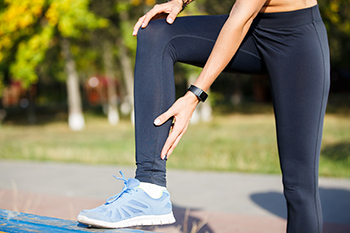
The Achilles tendon, the body's largest and strongest tendon, is susceptible to injury due to its limited blood supply and exposure to various forces. Aging and increased activity, particularly in high-velocity sports, raise the risk of Achilles tendon injuries. As the aging population remains active, these conditions are becoming more common, yet they are missed in approximately one-fourth of cases. Injuries can happen suddenly or develop gradually, often leading to extended healing processes. To make an accurate diagnosis and establish an effective treatment plan, a comprehensive medical history and specific physical examination are critical. The primary approach to managing tendonitis, peritendonitis, tendinosis, and retrocalcaneobursitis involves rest, cold therapy, anti-inflammatory medications, and orthotics. Tendon ruptures require casting or surgical intervention. Adequate treatment typically results in a complete recovery. If you have a painful Achilles tendon, it is suggested that you schedule an appointment with a podiatrist for a proper evaluation and treatment options.
Achilles tendon injuries need immediate attention to avoid future complications. If you have any concerns, contact the podiatrists of The Foot & Ankle Center of New Jersey. Our doctors can provide the care you need to keep you pain-free and on your feet.
What Is the Achilles Tendon?
The Achilles tendon is a tendon that connects the lower leg muscles and calf to the heel of the foot. It is the strongest tendon in the human body and is essential for making movement possible. Because this tendon is such an integral part of the body, any injuries to it can create immense difficulties and should immediately be presented to a doctor.
What Are the Symptoms of an Achilles Tendon Injury?
There are various types of injuries that can affect the Achilles tendon. The two most common injuries are Achilles tendinitis and ruptures of the tendon.
Achilles Tendinitis Symptoms
Rupture Symptoms
Treatment and Prevention
Achilles tendon injuries are diagnosed by a thorough physical evaluation, which can include an MRI. Treatment involves rest, physical therapy, and in some cases, surgery. However, various preventative measures can be taken to avoid these injuries, such as:
If you have any questions please feel free to contact our office located in Paramus, NJ . We offer the newest diagnostic tools and technology to treat your foot and ankle needs.
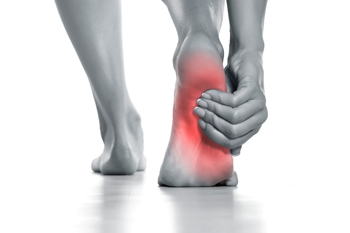
Foot pain is a common symptom associated with various foot conditions, and there are several options available for pain relief. When dealing with foot pain, it is advisable to explore conservative, non-pharmaceutical methods first. If your foot feels warm to the touch, indicating inflammation, using cold treatment can help reduce swelling. Conversely, if your feet are tired but not inflamed, a warm foot soak can provide relaxation. Foot massage is another effective practice that can improve circulation, reduce tension, and alleviate pain, and it can easily be done on your own or with the help of massage devices such as foot rollers. When it comes to pharmaceutical treatment, there are various options to consider. Included among them are oral analgesics, topical analgesics, non-steroidal anti-inflammatory drugs, or NSAIDs, COX-2 inhibitors, nerve-related medication, nerve blocks, and corticosteroids. If you have persistent foot pain, it is suggested that you consult with a podiatrist for a proper diagnosis and treatment that will be tailored to your specific case.
Foot Pain
Foot pain can be extremely painful and debilitating. If you have a foot pain, consult with the podiatrists from The Foot & Ankle Center of New Jersey. Our doctors will assess your condition and provide you with quality foot and ankle treatment.
Causes
Foot pain is a very broad condition that could be caused by one or more ailments. The most common include:
Diagnosis
To figure out the cause of foot pain, podiatrists utilize several different methods. This can range from simple visual inspections and sensation tests to X-rays and MRI scans. Prior medical history, family medical history, and any recent physical traumatic events will all be taken into consideration for a proper diagnosis.
Treatment
Treatment depends upon the cause of the foot pain. Whether it is resting, staying off the foot, or having surgery; podiatrists have a number of treatment options available for foot pain.
If you have any questions, please feel free to contact our office located in Paramus, NJ . We offer the newest diagnostic and treatment technologies for all your foot care needs.
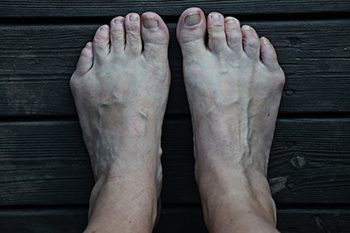
Tailor's bunions, also known as bunionettes, present a unique challenge with a bony lump on the outside of the foot around the small toe joint. While tight and ill-fitting shoes can exacerbate the issue, the exact cause of bunionettes is not fully understood. Inherited factors and the natural shape of foot bones play a significant role in bunionette formation. Causes include previous toe joint injuries, joint hypermobility, age, inflammatory arthritic conditions, tight leg muscles, and neuromuscular conditions. Footwear can also play a significant role. Tailor's bunions can cause discomfort and pain by putting pressure on the joint, bursa, and surrounding nerves. Treatment can include rest and elevation, applying a cold compress, and choosing footwear with cushioned heels, and good arch support. Further, using insoles, engaging in regular stretching and foot exercises, and exploring activities that put minimal pressure on the feet, such as swimming, may help. Weight management may also be beneficial. Footwear to avoid include wearing high heels and tight shoes, in addition to prolonged standing and walking barefoot on hard surfaces. If you have a bunionette that is causing discomfort, it is suggested that you schedule an appointment with a podiatrist for an exam and treatment options.
If you are suffering from bunion pain, contact the podiatrists of The Foot & Ankle Center of New Jersey. Our doctors can provide the care you need to keep you pain-free and on your feet.
What Is a Bunion?
Bunions are painful bony bumps that usually develop on the inside of the foot at the joint of the big toe. As the deformity increases over time, it may become painful to walk and wear shoes. Women are more likely to exacerbate existing bunions since they often wear tight, narrow shoes that shift their toes together. Bunion pain can be relieved by wearing wider shoes with enough room for the toes.
Causes
Symptoms
In order to diagnose your bunion, your podiatrist may ask about your medical history, symptoms, and general health. Your doctor might also order an x-ray to take a closer look at your feet. Nonsurgical treatment options include orthotics, padding, icing, changes in footwear, and medication. If nonsurgical treatments don’t alleviate your bunion pain, surgery may be necessary.
If you have any questions, please feel free to contact our office located in Paramus, NJ . We offer the newest diagnostic and treatment technologies for all your foot care needs.
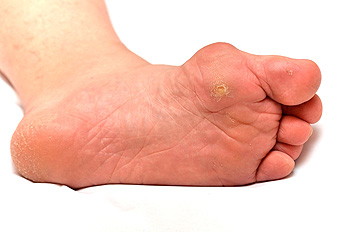
Corns are patches of thickened skin that develop on your feet, which can result from repetitive activities, wearing poorly fitting shoes, or underlying foot conditions. Among the different corn varieties, seed corns, also known as heloma miliare, can pose a unique challenge due to their small size, hardness, and often inconspicuous appearance on the soles of the feet. Seed corns are tiny, well-defined circular spots of hardened skin, commonly found in multiples on the sole where they create a distinctive pattern. Even though seed corns are often asymptomatic, they may cause discomfort or pain when pressure is applied, particularly in weight-bearing areas of the feet. Distinguishing seed corns from calluses is important for proper diagnosis and treatment. Unlike calluses, which are typically larger and can vary in shape, seed corns maintain a consistent round appearance. Additionally, calluses are more prone to form around the heel or the ball of the foot, while seed corns tend to cluster on the sole. For that reason, seed corns also can be mistaken for plantar warts. If you suspect you have a seed corn, it is suggested that you schedule an appointment with a podiatrist for an accurate diagnosis and appropriate treatment.
Corns can make walking very painful and should be treated immediately. If you have questions regarding your feet and ankles, contact the podiatrists of The Foot & Ankle Center of New Jersey. Our doctors will treat your foot and ankle needs.
Corns: What Are They? And How Do You Get Rid of Them?
Corns are thickened areas on the skin that can become painful. They are caused by excessive pressure and friction on the skin. Corns press into the deeper layers of the skin and are usually round in shape.
Ways to Prevent Corns
There are many ways to get rid of painful corns such as:
Treating Corns
Although most corns slowly disappear when the friction or pressure stops, this isn’t always the case. Consult with your podiatrist to determine the best treatment option for your case of corns.
If you have any questions please feel free to contact our office located in Paramus, NJ . We offer the newest diagnostic and treatment technologies for all your foot and ankle needs.
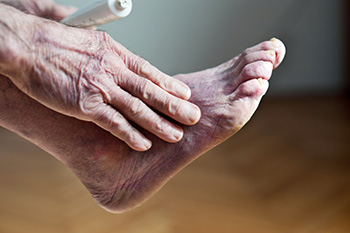
Poor circulation in the feet, often a symptom of underlying health conditions such as diabetes or peripheral artery disease, can lead to a variety of foot-related issues. Symptoms can include cold feet, numbness, changes in skin color, and slow wound healing. Without adequate blood flow, feet may not receive enough oxygen and nutrients, which can cause discomfort and increase the risk of infections and ulcers. It is important to manage underlying conditions, maintain a healthy lifestyle, and regularly check your feet for any changes or signs of problems. If you have symptoms of poor foot circulation, it is suggested that you make an appointment with a podiatrist who can diagnose what the cause is, and offer effective treatment options.
Poor circulation is a serious condition and needs immediate medical attention. If you have any concerns with poor circulation in your feet contact the podiatrists of The Foot & Ankle Center of New Jersey. Our doctors will treat your foot and ankle needs.
Poor Circulation in the Feet
Poor blood circulation in the feet and legs is can be caused by peripheral artery disease (PAD), which is the result of a buildup of plaque in the arteries.
Plaque buildup or atherosclerosis results from excess calcium and cholesterol in the bloodstream. This can restrict the amount of blood which can flow through the arteries. Poor blood circulation in the feet and legs are sometimes caused by inflammation in the blood vessels, known as vasculitis.
Causes
Lack of oxygen and oxygen from poor blood circulation restricts muscle growth and development. It can also cause:
Those who have diabetes or smoke are at greatest risk for poor circulation, as are those who are over 50. If you have poor circulation in the feet and legs it may be caused by PAD and is important to make changes to your lifestyle in order to reduce risk of getting a heart attack or stroke. Exercise and maintaining a healthy lifestyle will dramatically improve conditions.
As always, see a podiatrist as he or she will assist in finding a regimen that suits you. A podiatrist can also prescribe you any needed medication.
If you have any questions please feel free to contact our office located in Paramus, NJ . We offer the newest diagnostic and treatment technologies for all your foot and ankle needs.